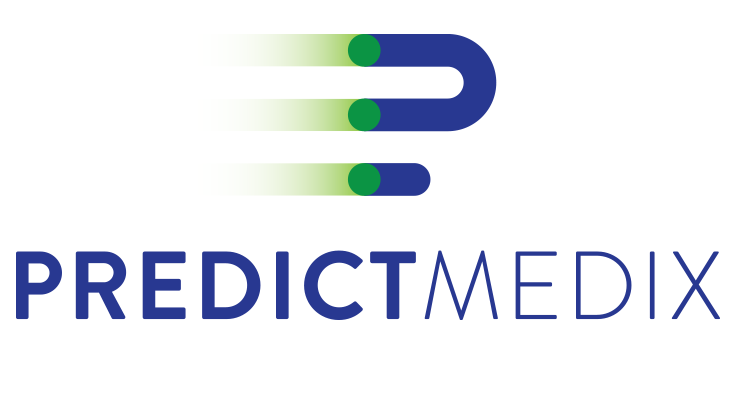Predictmedix – a great way to surf the Artificial Intelligence wave.

There is a saying attributed to Mark Twain that goes, “History doesn’t repeat itself, but if often rhymes.” This means circumstances might be different but similar events often recur. This is good because securities regulators demand that you make it clear that in the financial markets, “Past performance is no guarantee of future results.”
However, investment analysts continue to use rhymes and here’s one that could help you see sizeable investment returns from Predictmedix Inc. (CSE: PMED, OTCQB: PMEDF). This is how the rhyme comes together:
A. The 1990s technology boom: The parallel I see is between the current Artificial Intelligence cycle and the dot-com stock market cycle of ≈1990 to ≈ 2002. As background, the 1990s either developed or laid the groundwork for changes that completely transformed the world we live in. Out of that time came many new technologies and related developments and each was highly disruptive. Here is a very brief list of some of those developments:
(1) Nokia was the first mass-produced cellphone offered in 1992 with the ability to send and receive phone calls as well as store data (e.g. phone numbers).
(2) The World Wide Web, a.k.a. the Web browser was proposed in 1990 and debuted in 1991. This was the start of the Internet, Websites, e-mails and a massive amount of information that would become available to everyone.
(3) With the explosion of data available, finding it became a challenge. Mosaic started as the first search engine in 1993 followed by Yahoo in 1994 and Google in 1998. Today, Google has risen to the top and become synonymous with an Internet search. Google it.
(4) Other important developments of that time included the growth in the capacity of microprocessors, Photoshop, texting, rechargeable lithium-ion batteries, realistic videogames for a more adult market, collecting and using DNA, the start of e-tailing and more.
(5) Finally, we have the stock market. Cisco, Dell, Intel and Microsoft are sometimes referred to as the four horsemen of the 1990s tech boom. But we can’t ignore Apple and Google and there were many more that benefited. The smaller, new, Initial Public Offering companies came to the fore with incredibly high returns in the second half of the 1990s.
The chart to the right shows how stock markets performed during the 1990’s high-tech boom. A few things are worth noting:
(1) The Dot.Com stock market cycle lasted a long t time. Essentially, more than the decade of the 1990s. It’s length reflected the importance of the fundamental changes taking place.
(2) There was an important development regarding the stock market that has become part of the stock market legend. On December 5, 1996, Federal Reserve Board Chairman Alan Greenspan in a televised speech used the term “irrational exuberance” to describe a stock market that he thought was highly speculative and overvalued. His comment was intended as a warning from the Fed that the stock market, driven by the high-tech developments described above, was overvalued. His timing was five years early which is a lifetime in the stock market.
(3) The five years after Greenspan’s “irrational exuberance” statement was the most profitable for investors of the entire ten years plus of the stock market cycle.
As you sit reading this brief, imagine your life without a cell phone, the Internet, e-mail and text messages. How different would your life be without just these four products that emerged from the 1990s. A more relevant question might be how different would your life be if you had purchased shares in Apple or Cisco or Dell or Google or Microsoft back then?
B. The Artificial Intelligence Boom (AI): The term Artificial Intelligence was created in 1955. The idea was to have a machine that could take data, and find patterns that would enable it to make predictions and reach conclusions (make decisions). The Oxford Dictionary defines AI as “The theory and development of computer systems able to perform tasks that normally require human intelligence, such as visual perception, speech recognition, decision-making, and translation between languages.”
It was Moore’s Law in 1975 that stated the capacity of semiconductors would continue to double every two years which enabled computers to be able to put into practice the AI Boom that is taking place today. Current forecasts say the AI industry will grow to $900 billion by 2026 and $15.7 trillion by 2030. AI growth in the 1920s could dwarf anything high-tech was able to accomplish in the 1990s.
(1) There is an Artificial Intelligence (AI) boom going on and many people don’t yet realize it is even happening. AI is used in:
i. Self-driving and parking cars. AI is used by Audi, Mercedes-Benz, Tesla, Toyota and Volvo.
ii. Maps and navigation. Enter where you are and where you want to go by car and Google Maps, for example, will give you a choice of routes, the time optimal route taking into account construction and traffic.
iii. Facial detection or recognition. Facial detection identifies a human face or facial recognition that identifies a specific face that can be used for surveillance and security.
iv. Digital assistants such as Amazon’s Alexa, Apple’s Siri, Google’s Now and Microsoft’s Cortana. When combined with search and recommendation AI, Alexa or Siri is able to learn your preferences and recommend things you are interested in.
v. Customer service chatbots that answer frequently asked questions, track orders or direct calls. Often people will be unaware they are dealing with a machine.
vi. Vehicle recognition use computer vision and deep learning to find a specific car on a surveillance video.
vii. Robot vacuums can scan a living area, look for and remember objects in the way, remember the best route for cleaning the area and decide how many times it should repeat cleaning a specific area.
It is estimated that by 2030, between 400 and 800 million jobs will be displaced by Artificial Intelligence and 375 million people will have to change to a totally different type of work. It is also forecast that it is not just lower-paying, blue-collar jobs that will be replaced by AI. Jobs such as accountants, lawyers, doctors, investment advisors and portfolio managers might all be substantially eliminated. AI will impact all industries and the rate of change will be exponential, that is, the rate of change will accelerate.
For example, what does a doctor do? In general, a doctor gathers new information, refers to a patient’s medical history, refers to a medical book or today’s Internet, makes a diagnosis and provides s treatment. This is also what a lawyer does. AI might reach the point where it can do it faster and better than a human..
AI does present threats to human existence. As AI is changing exponentially, it will happen faster than the technology boom of the 1990s. It took technology 20 years to produce the changes we discussed above. AI could produce equivalent changes in 10 or 15 years. For example, ChatGPT, an AI product went from zero to 100 million users within months making it the fastest-growing consumer software product in history. There will be others.
(2) The AI shift could drive economic change and a stock market cycle at least as significant as the last “dot.com” cycle. The “go-to” companies today for participation in AI are the likes of Alphabet (NASDAQ: GOOGL), Amazon (NASDAQ: AMZN), Meta (NASDAQ: META), Microsoft (NASDAQ: MSFT), Nvidia (NASDAQ: NVDA) and Oracle (NYSE: ORCL). These are very large companies. GOOGL has a market cap of $1.6 trillion, AMZN has a market cap of $1.2 trillion, META has a market cap of $$648 billion, MSFT has a market cap of $2.4 trillion, NCDA has a market cap of $963 billion and ORCL has a market cap of $282 billion.
(3) While these are excellent businesses, they are also amongst the world’s largest companies. In 2022, GOOGL, META and MSFT purchased 2 out of every 3 AI chips. In my opinion, it is almost unthinkable that GOOGL can be a ten-bagger from a base market cap of $1.6 trillion or AMZN from $1.2 trillion. But it is clear these stocks now have a major component of their value derived from involvement in Artificial Intelligence and it is not surprising that early adopters would choose a lower risk/lower return approach to gain exposure to an emerging Artificial Intelligence industry.
(4) The changes created by AI also carry some risks. The speed of change will be challenging to human beings. There are forecasts that say one in four workers globally will see their jobs disappear and one in eight workers will have to be retrained in a totally unrelated field. During the industrial revolution and the tech boom, there was always the promise of more and better jobs. With AI we may have reached the point where machines actually do replace workers.
(5) Cathie Wood is a well-known and widely followed money manager with a reputation for expertise in the Artificial Intelligence sector. Wood manages a range of portfolios including the ARK Innovation Exchange Traded Fund (ARKK) and since its founding in 2014, Bloomberg estimates NDVA has contributed 13% of the fund’s 112% total return only behind Grayscale Bitcoin Trust, Invitae Corp and Tesla. That is all positive but Wood sold the ARKK holding in NVDA in January 2023 just before it rallied strongly adding some $560 billion to its market cap with $200 billion coming on one day after reporting earnings. Wood’s investors have basically missed the huge rally in the stock and the sector in 2023.
(6) But there is another phase I would look for and that is the participation of smaller, retail investors. Whether it was in the tech cycle I discussed above, the “meme” stocks or commodity exploration and development cycles in the past, the retail investor buys in before the bull market ends. Market pundits such as Citi global asset allocation and Vanda Research make the same observation: where is the retail investor?
We know the institutional investors have been getting in. So far in 2023 according to Bloomberg, the top 4% of stocks in the S&P 500 have contributed 94% of the index return and 8 of the top 20 include Apple, Microsoft, Amazon, Alphabet Class A, NVIDIA, Alphabet Class C, Tesla and Meta. In other words, the top 2% of the stocks in the S&P 500 contributed 94% of the return. Through mid-May, if the AI stocks are omitted, the S&P Index would be down -1.4% instead of up +8.3%. All of these stocks are AI leaders and each of them is an institutional stock. Yet, I believe the retail investor will come into the market and when they do, it is stocks like PMED for which they have always had an appetite.
C. I think investors will get more bang for their buck by investing in a small company like Predictmedix Inc. (CSE: PMED, OTCQB: PMEDF) with a total commitment to AI. From a base market cap of $16.6 million and, as I have pointed out in recent reports, many different business verticals to get them higher, I see PMED as a unique opportunity for aggressive growth investors. It is hard to imagine any decade having more of an impact on the ensuring socio-economic decades than the 1990s. Imagine your activities today without your cellphone, Internet, email and texting.
I expect the cycle driven by AI to be a long one, similar to the dot-com cycle that lasted longer than the decade of the 1990s. To the right is a chart published by Luke Lango’s Hypergrowth Investing. It shows the stock market in the 1990s and overlays current results. The parallels Lango sees include:
• Federal Reserve’s tight money policy slowed economic growth in 1990 as it is doing currently.
• In 1990, the markets were down around 20% and in 2022 stocks dropped around 25%.
• In late 1990, the Fed started reducing interest rates and the markets rebounded.
• In late 2022, the Fed has turned less hawkish and into 2023 has slowed the pace of interest rate increases. The markets have been recovering.
• In the early 1990’s, the dot-com stock market rally began and the market would advance generally higher for the rest of the decade and into the new millennium.
• Today, it is Artificial Intelligence that is pushing stocks higher and given my expectations for AI, it could stock prices higher until at least 2030.
Conclusion: I believe Predictmedix Inc. (CSE: PMED, OTCQB: PMEDF) is exceptionally well positioned to participate in the upcoming boom in Artificial Intelligence. There are many different ways to describe market cycles that evolve around such drivers. Here is mine:
1. Accumulation: the earliest buyers tend to be larger institutions that gain the information necessary to be early adopter. I have given several statistics to show this has been happening.
2. Retail Participation/Speculation: as the story gains acceptance, less experienced investors enter the market and prices begin to rise more quickly. After two to three years of combined buying by large and small investors, it is possible to identify speculative activities such as very rapid increases in a stock price or underwritings of companies based on questionable valuations. This is the next phase I see ahead for the current AI cycle.
3. Distribution/Sale: At some point, toward the end of the Retail Participation/Speculation phase, some investors will begin to sell. It is popular to believe that institutional investors or “smart money” sell at this stage. During the many years, I have spent in the investment business, this is not true. Institutions can hold on to their AI stocks for far too long and end up seeing their portfolios incinerated. This is still many years away. The challenge today with a stock like PMED is not getting out; it is getting in.
4. Bear Market: eventually there will be a broad sell-off of AI stocks. Some institutions will sell without regard for their impact on the market. Margin buyers will get margin calls and may be forced to sell again without regard to price. At this time, over half of the AI companies trading at that time will simply disappear. Some will be successful but remain smaller. Some will merge with another AI company. Some will be acquired. Very few will survive and become leaders in the industries. They will become the Alphabets, Amazons, Metas, Microsofts, Nvidias, and Oracles of the 2040s and 2050s.
I started out with the quote “History doesn’t repeat itself, but it often rhymes.” So I don’t think the AI cycle of the 2020s will be the same as the high-tech cycle of the 1990s but I think it will be similar. If you agree, Predictmedix Inc. (CSE: PMED, OTCQB: PMEDF) is a stock to buy for your portfolio.

Bob Beaty
For over 30 years, Bob Beaty has been explaining concepts and companies to the global investment community. One of the original writers for Jim Cramer’s Thestreet.com, he also wrote for AOL (Can/US), the Globe and Mail, and the Huffington Post. Over that period, he illuminated small-cap companies to investors with wit and pith but mostly opinion and facts. Investing should be fun. Pedantic, staid content is no fun.
Before embarking on his writing career, Bob had a successful international journey in the finance industry. He served as a broker, derivatives product manager, and a Director of London's Credit Suisse subsidiary. His career spanned across major financial hubs including Toronto, Vancouver, and the UK, giving him a unique global perspective. (He is still fondly remembering those English client lunches.)
Other than everything Groucho Marx and George Carlin ever said, Bob lives by a simple credo;
‘Never do anything the person standing in front of you can't understand.’ Hunter S. Thompson.
Let’s go.
